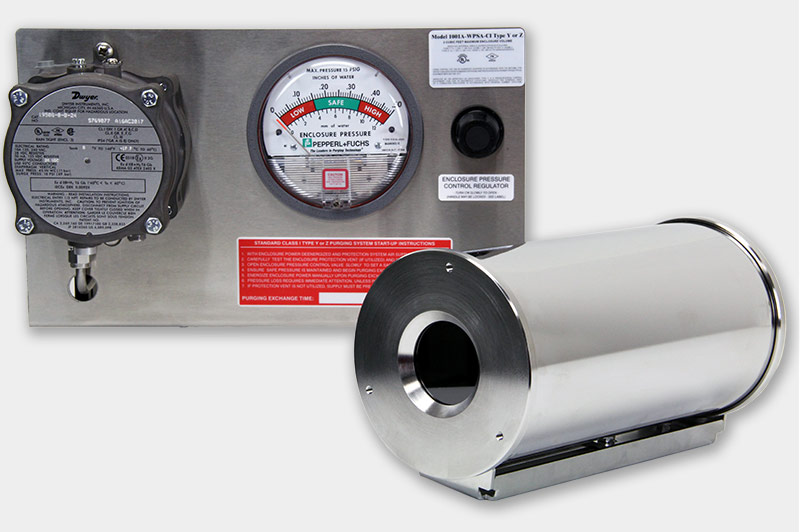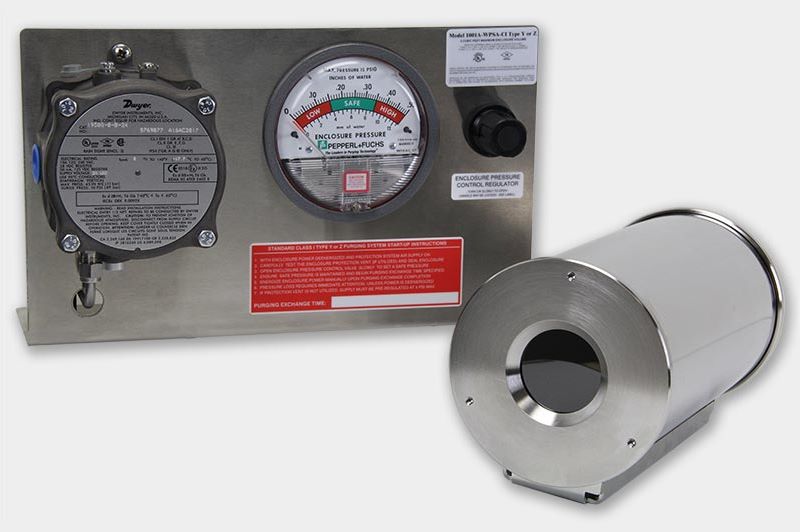Class 1/Div 2 Thermal Camera Enclosure
In many applications, cameras need to be installed in a hazardous area location. This is commonly referred to as an “Ex-proof” environment. These locations are classified as hazardous either because the area permanently or occasionally contains flammable or explosive substances. These substances can be solids, such as combustible dust, fibers or other particulates or, these could be gases. Industry standards and regulations mandate that equipment installed in these locations must not pose as a possible ignition source for such substances. This can be achieved with three distinctively different methods:
- Explosion Containment
- Explosion Prevention
- Intrinsically Safe Equipment
Get Started Today
Get in touch with our experts for a free consultation, or get a free quote. We will get back to you as quickly as possible.
Explosion Containment
With respect to camera enclosures, an explosion containment method is using a explosion proof enclosure, such as the FLIR A310ex, for example. This enclosure is capable to withstand an internal explosion, while containing the blast and assuring that released gases after the explosion will not pose an ignition source to the hazardous environment around the enclosure. These types of enclosures are very expensive, due to the heavy-duty construction required to meet these criteria. The advantage of using such an enclosure is that no purging and pressurization is required.
Explosion Prevention
This method utilizes a purge and pressurization system with constant pressure monitoring to assure that any potentially hazardous particles or gases have been purged out of the enclosure, prior to start up. After purging has been completed, the pressurization phase starts and maintains a higher pressure inside the enclosure compared to the outside environment. This assures that no explosive matter or gases can ingress into the enclosure. This is a more economical approach, since a normally constructed enclosure can be utilized for this method. No explosion containment is required.
Intrinsically Safe Equipment
A third method is available – using intrinsically safe equipment. There is a whole range of intrinsically safe electrical equipment available. The design of this equipment ensures that even when an electrical shortcut occurs, that the released energy (spark) does not contain enough energy to ignite the hazardous material that is or might be present. Other equipment may be potted in epoxy and hermetically sealed. Unfortunately, none of the remote monitoring or automated imaging cameras we work with, meet this requirement. Hence, we are left with resorting to either option 1 or option 2.
MoviTHERM offers explosion containment and explosion prevention solutions for visible daylight cameras as well as thermal cameras. The most commonly found area classification is Class 1/Div 2 Group x,x,x. The group letter classifies the type of hazardous material found in the location. Available groups are A,B,C,D,E,F and G. Class 1 refers to the area containing a gas or mixture of gases as the hazardous materials. Class 2 refers to solids. Div 1 indicates that the hazardous material(s) are always present during normal operation, whereas Div 2 states that the hazardous material is only present during an abnormal condition, such as a leak. Each one of these classes, divisions and groups has different requirements attached for explosion prevention as well as explosion containment.
We have off-the-shelf enclosures for the following cameras models:
FLIR A35, A65, A300, A310, A315, A615, A35sc, A65sc, A325SC, A655SC, A67xxsc, A83xxsc as well as other camera models.
MoviTHERM provides solutions for Class 1/Div 1, Class 1/Div 2, Class 2/Div 1 and Class 2/Div 2 hazardous areas.



Our solutions come with UL / FM / CSA approvals.

Our explosion containment enclosures have ATEX ratings.
Contact us today to discuss your application requirements with one of our application engineers today!











